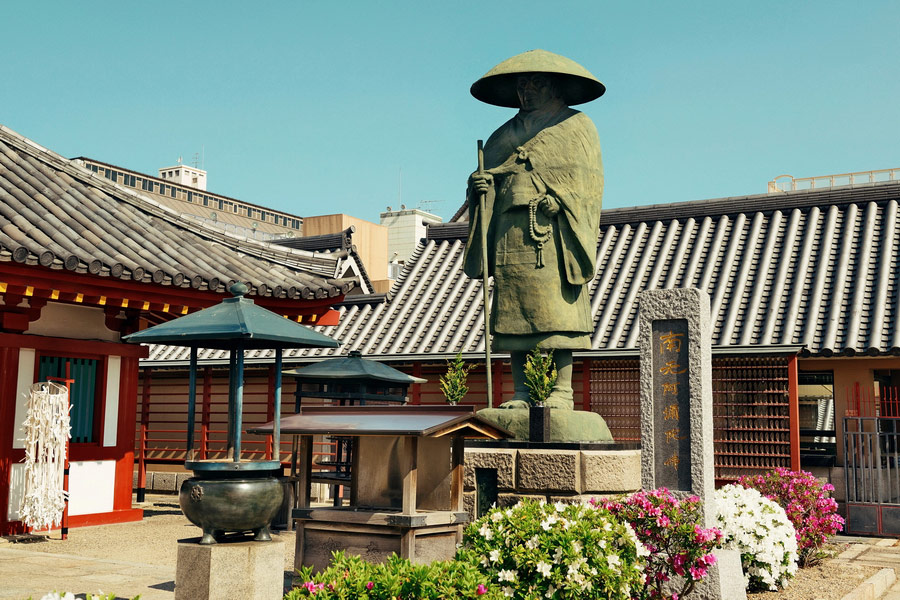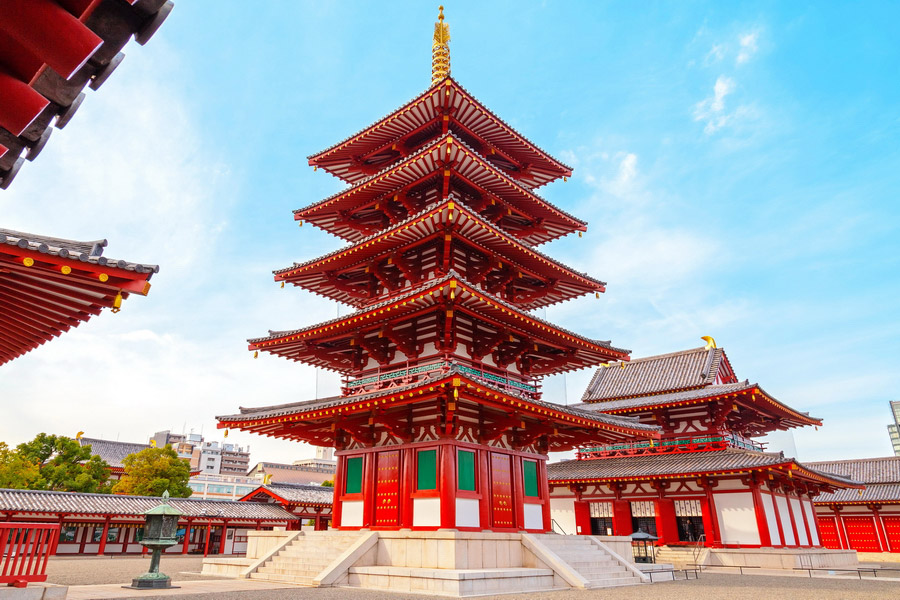Shitennoji Temple, Osaka

Shitennoji Temple (四天王寺, Temple of the Four Heavenly Kings; also known as Arahaka-ji, Nanba-ji, or Mitsu-ji) is one of Japan’s oldest Buddhist temples, located in Osaka’s Tennoji (天王寺区) district. Founded in 593 by Prince Regent Shōtoku (聖徳太子), it holds the distinction of being the first Buddhist temple in Japan built under state sponsorship.
How to Get to Shitennoji Temple
Conveniently located in central Osaka, the temple is easily accessible by several means of transportation:
By Subway
- From Shitennoji-mae Yuhigaoka Station: Take the Osaka Metro Tanimachi Line and get off at Shitennoji-mae Yuhigaoka Station. The temple is a 5-minute walk from Exit 4.
- From Tennoji Station: Take either the Midosuji Line or the Tanimachi Line to Tennoji Station. From there, it’s a 10–15 minute walk.
By Train
- From Osaka Station: Take the JR train to Tennoji Station (about 7 minutes, ¥1,100–2,100). Then walk to the temple.
- From Namba Station: Take the JR Yamatoji Line to Tennoji Station, then continue on foot.
History of Shitennoji Temple

Prince Shōtoku (574–622), one of Japan’s earliest champions of Buddhism, played a crucial role in spreading the faith during a time when it faced strong resistance from powerful Shinto clans.
In 587, a conflict erupted between the pro-Buddhist Soga clan (蘇我氏) and the anti-Buddhist Mononobe clan (物部氏). Prince Shōtoku supported the Soga and vowed to build a temple dedicated to the Four Heavenly Kings if they emerged victorious. After their win, Shitennoji was constructed as an expression of gratitude and a symbol of the new Buddhist era.
Over the centuries, the temple was destroyed and rebuilt several times. In 1934, the five-story pagoda was destroyed by Typhoon Muroto (室戸台風, Muroto Taifū). During World War II, the complex suffered extensive damage from air raids.
Each time, the temple was faithfully reconstructed according to its original 6th-century layout. The most recent major reconstruction was completed in 1963. The current structures replicate Asuka period (飛鳥時代, 592–710) architecture, including the five-story pagoda, the Kondō main hall (金堂), and the Kōdō lecture hall (講堂).
The Four Heavenly Kings
The Four Heavenly Kings (Shitennō in Japanese tradition, Caturmahārāja in Sanskrit) are the guardians of Buddhist doctrine, each protecting one direction of the world. Their statues are commonly found at the entrances of Buddhist temples:
- Dhṛtarāṣṭra – Guardian of the East, protector against evil spirits
- Virūḍhaka – Guardian of the South, associated with wisdom and compassion
- Virūpākṣa – Guardian of the West, known as the all-seeing protector
- Vaiśravaṇa – Guardian of the North, guardian of wealth and spiritual values
Architecture

The central complex, known as Chūshin Garan, is arranged along a north–south axis. It includes the inner gate (中門), the five-story pagoda (五重塔), the Kondō main hall, and the Kōdō lecture hall. These are surrounded by covered galleries that form a closed rectangular courtyard. The layout is inspired by the Buddhist temples of China and Korea from the Sui and Tang dynasties.
Five-Story Pagoda
This structure is the symbol of Shitennoji. Each level of the pagoda represents one of the five elements: earth, water, fire, wind, and void. At its core is the shinbashira (心柱), a central pillar designed to improve the structure’s resistance to earthquakes.
Kondō Main Hall
The Kondō is the temple’s primary worship hall and houses a statue of Kannon (観音), the bodhisattva of mercy. The interior reflects the simplicity and solemnity of early Buddhist architectural style.
Kōdō Lecture Hall
Located at the northern end of the complex, the Kōdō is used for religious rituals and educational events. It is connected to the other temple buildings by covered walkways.
Visiting Shitennoji Today
Shitennoji Temple isn’t just a relic of Japan’s ancient past – it’s a place where history still breathes. Within its calm courtyards and elegant wooden halls, you’ll find traces of a spiritual vision that helped shape the foundations of Japanese Buddhism.
Whether you're drawn by the temple's stately five-story pagoda, the legends of Prince Shōtoku, or simply the quiet rhythm of incense and footsteps, Shitennoji offers something more than sightseeing: a moment of connection with a culture over 1,400 years in the making.
Just a short walk from the busy streets of Osaka, it’s a space that invites reflection – and rewards it with beauty.

